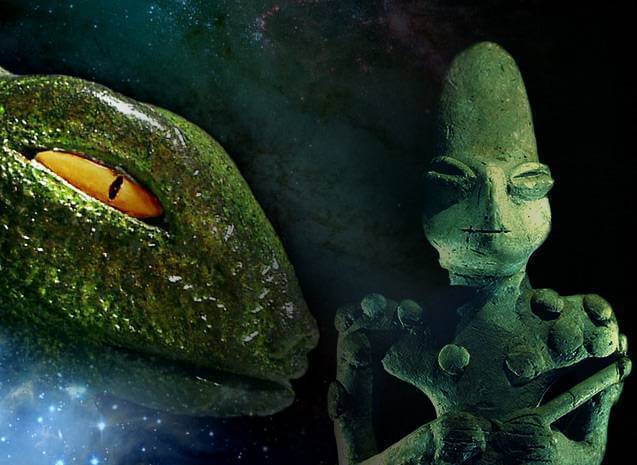The Sumerian tablets do not speak of these gods as etheric creatures, but biological flesh and bone. When one hears the word “gods” this usually evokes images in the mind of nebulous celestial spirits emerging from the edge of an indeterminate plane of reality. But that is not the description made by the Sumerians of these beings …
According to the ancestral tablets, the gods coexisted with man, sharing their lives in the same cities. They were physical and tangible beings, who ate, slept and fornicated like us. And also they died. Even sometimes some humans chose to copulate. Both women and men were very flattered to have the privilege of sleeping with a god or goddess. No human could resist their charms, and if they did, it would infuriate, which resulted in instant death.
In addition, they are traveling in vehicles powered flight, emitting large blazes, and loud noises that shook the mountains.
The Anunnaki were warriors, arrogant and with insatiable instincts of conquest and power. Physically, compared to men, they were very high, probably higher than 3 meters. And much stronger too.
In the Sumerians recorded, the Annunaki were represented in humanoid form, and although their facial features were partially obscured, partly because of their beards, seemed to have a human face.
But we are many who suspect that there is something wrong in relation to its actual appearance.
In almost all recorded and reliefs where the Anunnaki are represented, we see 3 highly recurring items. First, if we look at the relief image, below, we see a God who with his right-hand holds a kind of pineapple. For some researchers, such as the American David Wilcock, pineapple came to symbolize the pineal gland, because, in it, it would be deposited most of the psychic abilities such as clairvoyance, remote viewing, or telepathy. According to Wilcock, the Anunnaki knew how to stimulate the gland to extract its full potential.

A second common element is the mysterious container holding, and according to Sitchin and others, would become the boat where they deposited the so-called “Water of Life”, something like a bank of utilitarian genes to be used in their genetic experiments, not only human beings, also in animals. A third recurring object is that kind of bracelet on each of their wrists, and if we look closely, suspiciously reminds us of a clock.
‘Copyright’ Reptilian
In Babylon, they termed the Anunnaki with the term ‘SIR’ which means ‘dragon’ or ‘Big Snake’. In fact, the god Enki belonged to a family line called The Brotherhood of the Snake, as his mother, Nannu concubine was a descendant of this blood. The symbol of Enki were the two coiled snakes of the caduceus, now associated with our current medical symbol, but could hide up to 3 types of meanings:
1. The reptilian nature of the Anunnaki: One possibility increasingly contemplated by researchers around the world, given that almost all ancient cultures speak of “God Snakes” or “Lizard Men” taken down from the stars, who credited the very creation of our species.
2. Reptilian genetics: According to this interpretation, because the two coiled snakes are closely matched with the two helices of human DNA chain, it would be a hallmark, to indicate that they created us. The caduceus would be like a copyright that comes to remember who the “manufacturer” of our race were.
3. Spiritual Wisdom: Is a symbol of caduceus synthesis of knowledge and spiritual wisdom? As is symbolized in Hinduism, the coiled snake is Kundalini energy that man keeps latent in the sacral chakra, pending amounting to enlightenment, covering all energy centers up to the seventh and final chakra, the coronal, that would be linked to Nirvana.
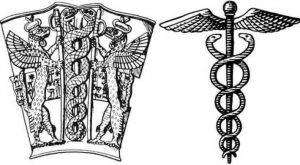 But beyond the symbolism implicit in the serpent, are there greater signs of reptile nature of the Anunnaki?
But beyond the symbolism implicit in the serpent, are there greater signs of reptile nature of the Anunnaki?
The answer is yes. Northern Iraq, at the foot of the Zagros mountains, archaeologists found the site of Jarmo. There were the remains of a proto-Neolithic community who disappeared 2000 years ago. Like thousands of statuettes of Sumerian gods, including several performances of “Mother Goddess of Fertility.”
The problem is that those figures, although showing an anthropomorphic body, their heads and faces were not human, but rather zoomorphic. Both males and females showed characteristics of lizards; slanted eyes very large, elongated faces with sharp snouts, features “lizard” elongated skulls conical, broad shoulders, and stylized figure.
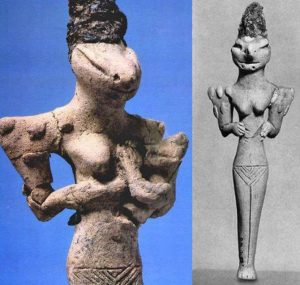 One of the most intriguing figures is that of a female ( “Mother Goddess”) holding a baby curled up against his chest, in the process of feeding.
One of the most intriguing figures is that of a female ( “Mother Goddess”) holding a baby curled up against his chest, in the process of feeding.
If we look at the baby, we see that his head is reptilian and his eyes are torn like her mother. So far, one might think that the symbolism of the serpentaria and the finding of these figures are mere coincidence. The problem is that they have already found elongated skulls that show a level of deformation that does not correspond with humans, but with the heads of those reptilian statuettes.
Cone heads
In the Archaeological Museum of Lima (Peru), and the National Museum of Ica, are exposed a series of strange skulls that do not seem to belong or man of Neanderthal, nor to Cro-Magnon, or to Homo erectus, but much less to Homo sapiens today. They are dolichocephalic skulls type, with unusually large eye sockets, and sturdy jaw with protruding chin.
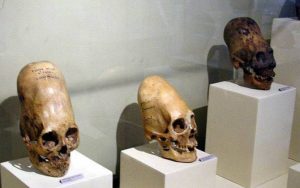
Critics say these skulls are perfectly human, and that these strains are part of rituals of certain cultures to resemble the gods. They would practice cranial deformation which date back to ancient Egypt. To that end, they used wooden boards or leather straps attached to the skull at birth. The child suffered a constant cranial compression that could actually deform the front, sides and neck. What is impossible is to modify the cranial capacity in cubic centimeters.
These practices deformed bone, but could not increase its volume. And the proof of this is that the skulls found that performed these deformations, have nothing to do with the anomalous skulls type – Coneheads .
The larger size of human skull on record, measured 1980 cc But some of these anomalous skulls reached a size of about 3200 cc Certainly a very substantial difference that defies conventional explanation. In addition, these skulls have 15% more width in their eye sockets, and the perfect symmetry of its lobes rule out any external mechanical pressure. The conclusion we reach is that they do not belong to any human being. Instead, they keep a close resemblance to the heads of the Anunnaki set out in the previous figures.
According to the Swiss researcher Nassim Haramein, an expert in physics, these skulls which he calls “cone heads’ belong to the Anunnaki old and are the proof that they were not human.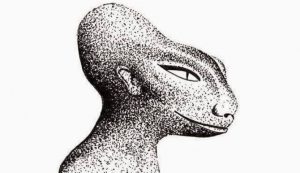
For the French writer Anton Parks, author of The Chronicles of Gírkù , the following would be the true appearance of an Anunnaki:
Authentic conical reptilian skull and big eyes of a glowing yellow!
Forbidden History
Many of our readers may think that the story extracted from these tablets is nothing more than a set of mythologies. The ‘official’ archeology conceives these gods and disembodied beings emerged from the fertile imagination of our ancestors. But then the question arises, if this story is nothing more than pure legend … why between 10 and 14 April 2003, during the invasion of Iraq, the US army pillaged the National Museum Baghdad antiques? Why 80% of the 170,000 objects housed in the museum were stolen and destroyed? They were tablets, treasures, and statuettes that revealed more details of the forbidden history. During the looting, there was a fire at the National Library of Baghdad that destroyed files of incalculable historical value. If they are “only legends’, what army would enter the museum entrance with a tank to leave no trace of these vestiges?
Continue reading What was the true aspect of the Anunnaki gods? at Alien UFO Sightings.
